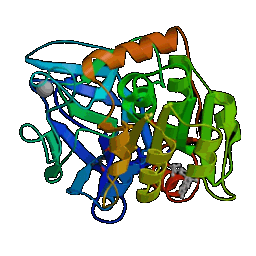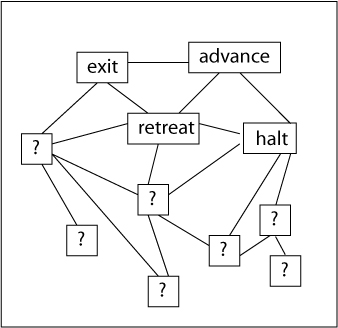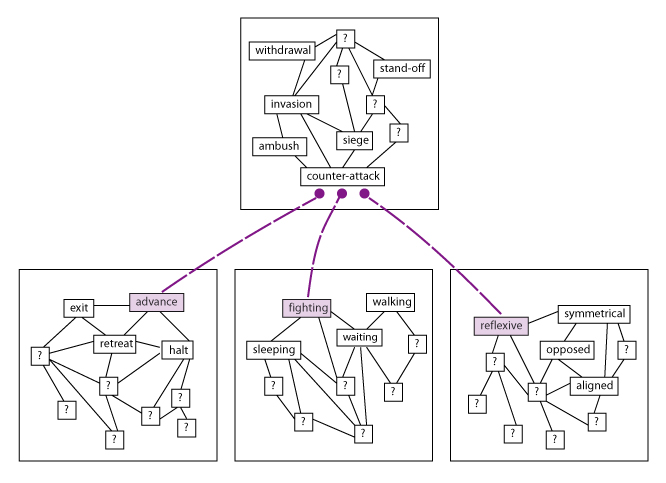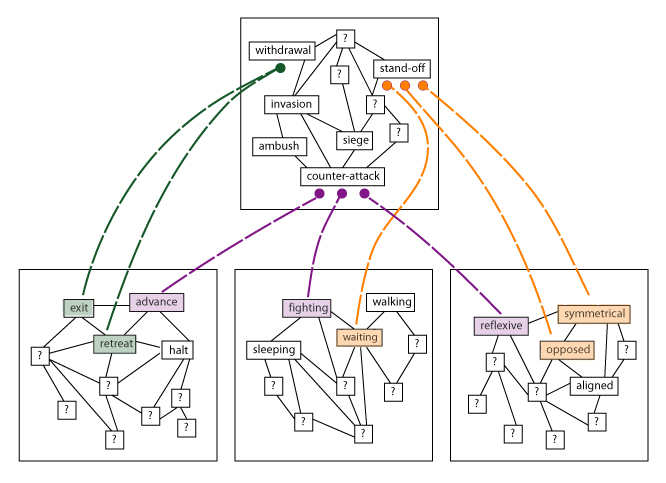
Generartive Creativity - lecture 17
Theories
Introduction
In `The Creative Mind: Myths and Mechanisms' (Boden, The Creative Mind,
1990) Boden presents a simple, abstract model of conceptually-mediated
creativity.

This forms a mechanism for generation of conceptual structures and,
ultimately, complete theories.
P-creativity v. H-creativity
Boden notes that there are two ways in which an artefact might be deemed
`creative'.
- It might be historically creative, in the sense that such a thing has
never been created before. Artefacts of this type she terms
H-creative.
- It might be psychologically creative, in the sense that
creative processes were utilised in its construction.
Artefacts of this type she terms P-creative.
She then focusses attention on the question of what is to count as
P-creativity.
Creativity paradox
Boden notes the following problem with the concept of creativity.
- Creativity creates, i.e., it produces something new.
- But everything that occurs is predictable in principle.
- So nothing can ever be really new.
Boden aims to produce a theory which resolves the paradox.
Creativity as concept development
Boden's assumption is that creativity is always mediated by
conceptual development of some form.
Any creative act is always founded on conceptualisation and she sees
this in terms of the realisation of a `point' within a
`conceptual space'.
But, she says, there are two ways in which it might happen.
- If the conceptual space already has a mental representation (assumed
to take the form of a set of generative rules) realisation of a new
point is simply a matter of identifying a new location within that
space.
- If no such representation exists, then realisation of a new
point necessarily involves construction of the representation
as a preliminary step.
Exploration versus transformation
Boden distinguishes two forms of conceptual development:
- a straightforward form, termed exploration, involving the
identification of a new point in an existing space, and
- a more complex form, termed transformation, which involves the
construction of a new conceptual space.
Creativity identified with transformation
Boden then makes her key move.
We can now distinguish first-time novelty from
radical originality ... A merely novel
idea is one which can be described and/or
produced by the same set of generative rules as
are other, familiar ideas. A genuinely original,
or creative, idea is one which cannot.
A new concept, then, is to be considered genuinely creative
(i.e., P-creative) just in case its construction involved some
element of transformation.
Conceptual space development example
Partially explored space of motion concepts.

Multiple conceptual spaces
Partially explored spaces of motion, action and relational concepts.

After transformation
Following a transformational step, a new space of military-tactic
concepts is created.
One of the concepts in this space embodies concepts from all three
original spaces.

Varieties of concept construction
Concept construction may be compositional (sub-concepts are
constituents of a new whole) or categorical (sub-concepts are
instances of a new class).

Key features of Boden model
- Explains the creative process in terms of exploration in,
and transformation of generatively-represented conceptual
spaces.
- Terms of reference are ordinary computational processes,
readily understood in terms of conventional models.
- The core definition attempts to link creativity specifically with
transformation (generation of new spaces).
The paradox resolved?
For Boden, her way of framing the definition effectively
resolves the creativity paradox (that creativity involves
production of novelty in a world in which nothing can ever be
really new).
A concept whose construction involves some element of
transformation cannot be generated on the basis of existing
mental representations. In this sense, it is mentally
`impossible'.
Boden can then justify saying a
concept is `new' on the grounds that it was previously
`impossible'.
As she puts it `To justify calling an idea creative ... one must
identify the generative principles with respect to which it is
impossible.' (Boden, The Creative Mind, 1990, , p. 40)
Exercises
- Does the problem of plagiarism relate to H-creativity or to
P-creativity?
- Give three types of creativity which do not involve the development
of new concepts.
- Specify three other concepts that you might find in a conceptual
space containing the concept `iPod'.
- Repeat the exercise assuming the space also contains the concept
`ferrari'.
- Repeat the exercise assuming the space also contains the concept
`burberry handbag'.
- Were we to apply a transformation to a particular conceptual space,
how many new concepts would the original space acquire?
- Assume the concept `student' is not currently represented in a
particular space. Which process has the better chance of developing it:
exploration or transformation?
- A conceptual agent performs two transformational operations followed
by a sequence of 23 explorational ones. At which point does it become
`creative' on Boden's criterion?
- According to Boden, when an agent produces a new concept, the act is
creative only if the new concept is `impossible'. In what sense is the
new concept impossible, given that the agent is able to construct it?
Reading
- See either the original edition of Boden (Boden, The Creative Mind,
1990) or the more recent paperback (Boden, The Creative Mind, 2003). The
2003 edition has some additional material.
- Boden's review of previous theories: Boden, 1990, ch 2, Boden 2003,
ch 2.
- See Poincare (a key source for Boden) on creativity: Poincare 1982
- Poincare 1905, `The Foundations of Science', published in English by
Science Press, 1946.
Page created on: Wed Jan 14 11:16:42 GMT 2009
Feedback to Chris Thornton

